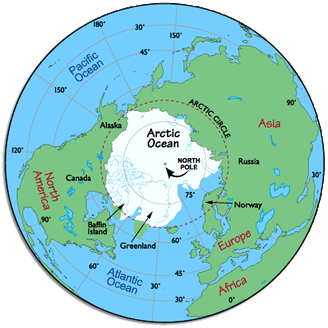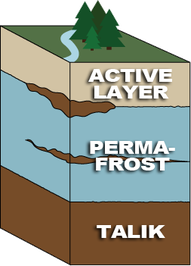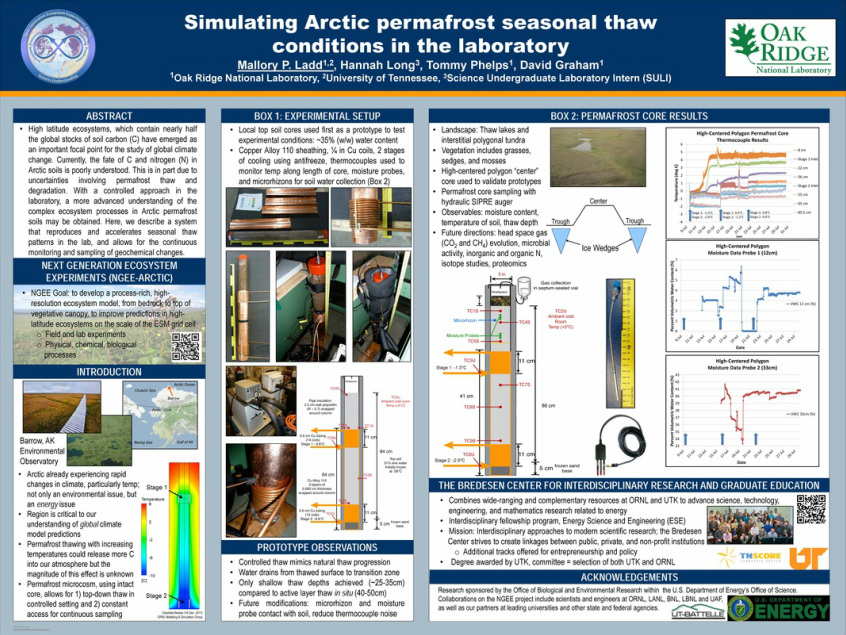|
Greetings scientists! As some of you may know, I started working with scientists at Oak Ridge National Lab (ORNL) this past summer. Before we get into all of the suhweet science I’ve had the opportunity to join in on, I want to tell you a bit about ORNL (just because it actually has a pretty rad history). ORNL came to life under President Teddy Roosevelt in 1943, born out of the Manhattan Project, as one of the main centers for researching and developing the atomic bomb. Umm...DUDE. Then, in the 50s, Eisenhower wanted the ORNL labies to research new ways we could use nuclear energy for power, electricity, and cancer treatment studies. Right on! Right? While studying the physics of radiation damage, scientists at ORNL literally stumbled on the basic science behind what would eventually lead to the development of semiconductor chips (you know, those things that help run…well...almost everything). And, if ORNL wasn’t BA enough already, during the 60s, J.F.K pushed ORNL and other national labs, including NASA of course, into the space race. So, on top of making bombs, exploring nuclear energy applications, AND researching the principles of electronics, ORNL scientists helped predict the effects of the sun’s radiation, designed a reactor to power satellites, and investigated new power sources for instruments that could be used in space. But they were just getting started... In the 70s and 80s, biological and environmental research became another main focus at ORNL, and scientists and engineers from universities and industry were finally invited in to learn how the lab did its research (instead of just hearing about what they were doing behind closed doors like they had to before). From then on, ORNL became one of the world’s most powerful and scientifically diverse research hubs. W00t! ORNL now researches not only nuclear energy, but all forms of energy, and their impacts on the economy as well as the world’s ecosystems and future climate conditions. And that is why I chose to come to Tennessee for my graduate research. :) That and the fact that the Department of Energy recently started a new project in the Arctic lead by scientists at ORNL collaborating with Los Alamos National Lab, Lawrence Berkeley National Lab, Brookhaven National Lab, and The University of Alaska-Fairbanks. Eek! :D I’ll get into more of the nitty gritty details of the NGEE project in later posts, but for now, here’s the [extremely] brief background. Basically, NGEE scientists are interested in understanding how climate change will affect Arctic soil (ya know, dirt!), and how changes in the soil might then impact global climate trends in the future. So, if we wanted to study Arctic soil, like with many environmental studies, there are two general ways of analyzing a sample: 1) field studies and 2) lab studies. For example, in order to get the whole picture of what’s really happening below the Arctic surface, we need to not only study the soil undisturbed, "in the field", but we also need to bring some of that soil back here to our lab in Tennessee so we can take a closer look under controlled conditions. That doesn't sound too bad right? It’s easier said than done I’m afraid. Remember, Arctic soil is FROZEN most of the time. The soil that’s been frozen for two or more years is called permafrost, and just above the permafrost, there’s another layer that freezes in the winter but thaws in the summertime. That’s called the “active layer.” NGEE wants to study both, and then some. But, you can't just go up there and start digging with a shovel. Not really anyway. One way we are able to study all these different layers of soil is actually by drilling into the permafrost with a giant hydraulic SIPRE auger, which reaches down a meter into the soil (it can go deeper but we only want ~1 m) and removes a “soil core” which is about 3 inches wide in diameter. The cores are kept frozen during their entire trip down to Tennessee so that we eliminate potential changes in the soil that do not normally happen if the core were never removed from it's natural place. If the core were allowed to thaw and refreeze over and over again during transport, the soil properties and characteristics would change and we would no longer be studying the "standard conditions" associated with Arctic permafrost soils. After the core arrives at ORNL, it is stored in a freezer until we are ready to run our experiments. This past summer, I worked with the biogeochemistry team at ORNL to build and optimize a system, in the lab, that could mimic Arctic environmental conditions around our cores. We needed a way to control the temperature of the core so that the active layer would thaw like it naturally does during the warmer summer months. And we also needed a way to continuously monitor the temperature, in addition to other measurements such as moisture and microbial activity, to make sure we were actually imitating permafrost thaw progression. This meant we needed a system that was easy to access but fairly contained as well to keep the core as intact as possible. Click on the poster for pictures that go along with the summary listed below it! -A "cold room" (~12ft x 12ft) set to 5 degrees Celsius is where all the set-up and measurements took place; this was successful in keeping the entire system cold enough for a slow, controlled thaw to take place. -Using thin sheets of a copper alloy, and long 1/8 inch copper coils, we were able to make a "jacket" to wrap around the core and two "cooling stages" to control the temperature of the core at different depths. -30% antifreeze solution, previously chilled to a particular temperature (see schematic on poster), was run through the copper coils to create a temperature gradient across the length of the core. -By adjusting the temperatures of stage 1 and stage 2 throughout the experiment, we were successfully able to gradually thaw the core from top to bottom. -The entire system was insulated to prevent freezing of the lines or condensation buildup. -Thermocouples were inserted in the soil from the top of the core to the bottom so we were able monitor the temperature changes of the soil; this proved to be a fairly accurate way of monitoring thaw depth as the core warmed to the temperature of the cold room. -Two moisture probes were used in the soil at two different depths. -Overall, our preliminary data suggests this system, with a few minor adjustments, can mimic the environmental conditions observed to occur in the Alaskan Arctic! :)
34 Comments
8/1/2022 05:07:57 am
Güvenilir takipçi hizmeti arıyor ama bulamıyor musunuz? Tamamen güvenlik standartlarına sahip adresimiz ile hemen takipçi al. Kaliteli ve hızlı hizmetlerimiz için adresimize bekleriz.
Reply
8/1/2022 07:19:45 am
Really informative article, I had the opportunity to learn a lot, thank you. https://takipcisatinalz.com/takipci-2/
Reply
8/1/2022 07:52:51 am
Tamamen gerçek takipçiler sizleri bekliyor. Herhangi bir şekilde düşmeyen kaliteli takipçilere sahip olmak artık çok kolay. Türk takipçi satın al seçeneği ile hızlı bir büyüme elde edin.
Reply
8/2/2022 03:40:50 am
Really informative article, I had the opportunity to learn a lot, thank you. https://www.ugurelektronik.com/
Reply
8/2/2022 10:27:39 am
Really informative article, I had the opportunity to learn a lot, thank you. https://takipcialdim.com/ucuz-takipci-satin-al/
Reply
8/2/2022 04:36:15 pm
Really informative article, I had the opportunity to learn a lot, thank you. https://www.takipcikenti.com/instagram/turk-takipci/
Reply
8/3/2022 02:29:10 pm
Edirne ECA servisi hizmetlerimiz memnuniyet odaklıdır. Detayları incelemek için hemen web adresimize göz at! https://www.edirneklimaservisi.com/edirne-eca-servisi/
Reply
8/9/2022 08:04:32 am
Really informative article, I had the opportunity to learn a lot, thank you. https://www.smsbankasi.net/2022/08/amazon-shopify-aliexpress-walmart-ebay.html
Reply
8/11/2022 05:16:05 pm
Really informative article, I had the opportunity to learn a lot, thank you. https://bit.ly/instagram-takipci-satin-al-takipci
Reply
8/19/2022 06:08:11 pm
Really informative article, I had the opportunity to learn a lot, thank you. https://guvenbozum.com/
Reply
9/5/2022 12:22:57 pm
Really informative article, I had the opportunity to learn a lot, thank you. https://freecodezilla.net/active-ecommerce-cms-2/
Reply
9/11/2022 06:23:34 pm
Really informative article, I had the opportunity to learn a lot, thank you. https://kurma.website/
Reply
9/12/2022 05:38:05 am
Really informative article, I had the opportunity to learn a lot, thank you. https://odemebozdurma.com/
Reply
9/14/2022 08:58:55 pm
Really informative article, I had the opportunity to learn a lot, thank you. https://bit.ly/site-kurma
Reply
10/5/2022 08:57:30 am
It was a post that I found very successful. Good luck to you. https://escortnova.com/escort-ilanlari/agri-escort/taslicay-escort/
Reply
10/5/2022 11:08:41 pm
I follow your posts closely. I can find it thanks to your reliable share. Thank you. https://escortnova.com/escort-ilanlari/ankara-escort/elmadag-escort/
Reply
10/6/2022 01:12:24 pm
I support your continuation of your posts. I will be happy as new posts come. Thank you. https://escortnova.com/escort-ilanlari/mersin-escort/yenisehir-escort-mersin-escort/
Reply
11/21/2022 12:39:32 pm
Tıkla evde calismaya basla: https://sites.google.com/view/evden-ek-is/
Reply
12/9/2022 12:19:56 pm
kaliteli düşmeyen takipçi satın al: https://takipcialdim.com/
Reply
12/9/2022 12:20:26 pm
İnstagram beğeni satışı yapan firmamıza göz atın: https://takipcialdim.com/instagram-begeni-satin-al/
Reply
12/15/2022 11:53:37 am
uygun fiyatlardan takipçi Hemen Göz At: https://takipcim.com.tr/
Reply
4/27/2023 05:02:49 pm
masteron siparişi ver: Anabolic Kapında masteron fiyatları ve çeşitleri
Reply
4/27/2023 10:43:48 pm
Anabolik Steroid Satın Al: https://www.anabolickapinda14.com/urun/
Reply
8/9/2023 12:58:45 pm
Steroid Siparis Steroid Fiyatlari Steroidler Anabolizan Orjinal Steroid Steroid Satis Steroid Satın Al Steroid Siparis Et
Reply
8/15/2023 11:01:58 am
https://www.sporunuyap8.com/ teşekkürler
Reply
Leave a Reply. |
Hello!Welcome to Think Like a Postdoc. If you're a fan of science as much as I am, and/or are curious about getting a degree in a STEM field, or pursuing an interdisciplinary graduate degree (all from the perspective of a graduate student), then you're in the right place. Think Like a Postdoc also includes posts about my current lab and field research, including analytical chemistry, Arctic biogeochemistry, and energy & environmental policy. Comments and questions are always welcomed. And please tell me what you want to hear about next! Top PostsQuestions to Ask Before Choosing Grad Program
Dirt Popsicle First Semester of Grad School Field Work in Alaska Science Conference Dos and Don'ts Women in STEM Series Things I've Learned in Grad School Series Blogs I FollowMass Spectrometry Blog
Metabolon Compound Interest The Grad Student Way SouthernFriedScience Science Blogs Anthony's Science Blog The Thesis Whisperer GradHacker Fossils and Shit Science Communication Breakdown Science Communication Media Categories
All
Blog Archives
August 2017
|





 RSS Feed
RSS Feed

